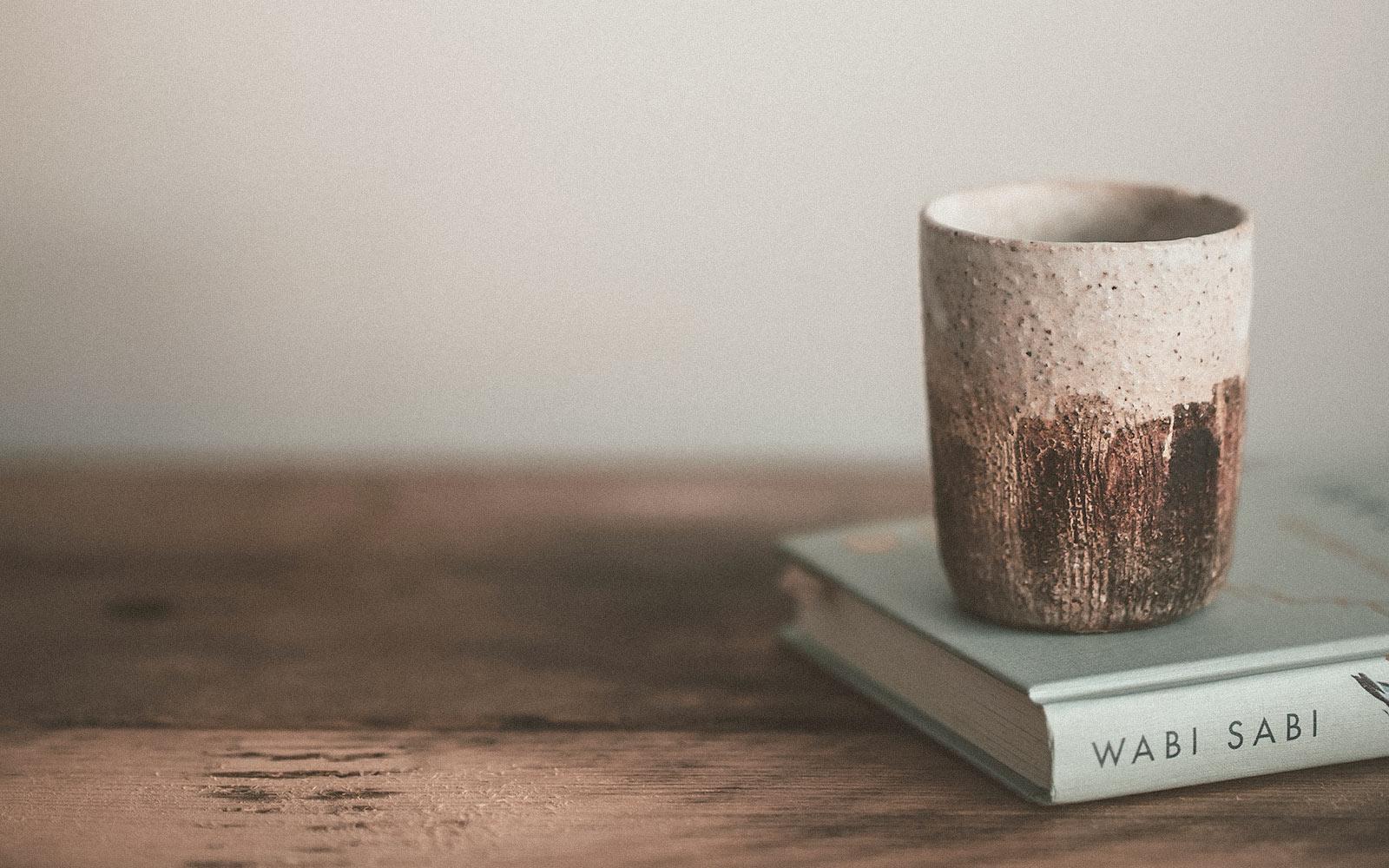Table of Contents Show
Wabi-sabi (Japanese 侘寂), according to Wikipedia, is “a world view centered on the acceptance of transience and imperfection” deeply routed “in traditional Japanese aesthetics.” Zen influenced many traditional Japanese art forms over many thousand years. Wabi-sabi is an important element that stemms from Zen Buddhism. This is also why wabi-sabi is sometimes hard to grasp for westerners as we do not have a long history with the concept in our culture.
Japanese society and history hold many meaningful and profound concepts. Those became a part of Japan’s culture, and wabi-sabi is only one of those many concepts. So, wabi-sabi is more a Japanese philosophy than anything else. It does still have a crucial role in everyday life of many Japanese people.
While martial arts or budo in many forms are about perfection and precision, wabi-sabi does have a very intriguing concept of the beauty of imperfection. I will cover the impact of it later when it comes to mental health from a western perspective later.
Wabi-Sabi – a definition
Zen Buddhism is the foundation stone of the wabi-sabi concept in Japanese society. The general idea and ideology stem from the three marks of existence, impermanence (mujō), suffering (ku), and emptiness of self-nature (kū). In Zen, there are seven principles for achieving wabi-sabi.
- Kanso – 簡素 – (simplicity)
- Fukinsei – 不均斉 – (asymmetry or irregularity)
- Shibumi – 渋み – (beauty in the understated)
- Shizen – 自然 – (naturalness without pretension)
- Yūgen – 幽玄 – (subtle grace)
- Datsuzoku – 脱俗 – (freeness)
- Seijaku – 静寂 – (tranquility)
For westerners, it’s easier to understand when we talk about the appreciation of natural and raw forms. Therefore it’s the complete opposite of our western pursuit of perfection and artificial beauty. The concept of wabi-sabi appreciates that people, animals, plants, and objects are not perfect. This allows us to be more open to embracing the beauty of flaws.
Indeed, it does have the power to change your mindset because as soon as you embrace that imperfection. You learn that not everything you create or do can or must be perfect. This way of thinking helps me to get started with things and improve along the way instead of creating something ideal right from the start.
I also touched on the topic in my article about how to journal for self-improvement and self-growth. It was hard to get started because I had this perfect image of a beautiful journal entry in my head until I reminded myself that the form was less important than the getting started part.
The meaning of the words wabi-sabi
I hope to be able to explain the concept of wabi-sabi even better to you. So let me explain the meaning of the words to you. The first known definition of wabi dates back to the 8th century. At that time it would translate into the misery of living alone in nature and away from society. Sabi, then, meant lean, withered, or chill. That meaning changed around the 14th century of Japanese history into freshness, simplicity, tranquility, and even rustic beauty for wabi. Sabi, from then on, translates more into things whose beauty stems from age, so patina and damage through daily usage.
So you can say that wabi-sabi is more like a feeling instead of a concept for Japanese people.
Where can you find the concept of wabi-sabi in today’s Japanese culture?
Today’s most obvious occurrences of wabi-sabi in Japanese culture are in Japanese pottery, tea ceremony, interior design, architecture, and poetry (haiku). Here, let me talk about the most apparent forms of wabi-sabi, Japanese pottery.
1488 in Kyoto, Japan, the Buddhist monk Murata Jukō (村田珠光) wrote “The letter from the heart” (kokorono fumi). It significantly changed the practice of tea ceremony in Japan. This letter formed the modern form of the tea ceremony by incorporating aspects of Zen into it. Before that time, flawless Chinese pottery was used for tea ceremonies. He felt that the tea ceremony was degenerated into a display of wealth and fortune.
From then on, the tea ceremony changed significantly, and instead of Chinese pottery, people started using Japanese pottery that incorporated the concept of wabi-sabi. This trend lasts until today. The formal tea bowls (chawan) are still in use today and trade for high prices if they are of good quality.
Here you can see the difference between Chinese versus Japanese and some other tea pottery.

Books I recommend reading
- Wabi Sabi: Japanese Wisdom for a Perfectly Imperfect Life – Beth Kempton. I highly recommend reading this book teaches you more about topics like self-love, living without sorrow, and just at the moment, enjoying life right now without needing to be perfect. That book talks about Wabi Sabi, which is comforting, even, and calm.
- Wabi Sabi: The Japanese Art of Impermanence. Nothing Lasts, Nothing is Finished, Nothing is Perfect – Sosuke Takahashi. This book shows many parallels to Stoicism. This book for self-help is one of the best ones out there that I refer back to often. A great help to living a happy, healthy life.
- Wabi inspirations – Alex Vervoordt. – Interior design guru Axel Vervoordt shares his latest inspirations for the home. Axel Vervoordt’s intense curiosity has fueled his work as an interior designer. This lead him to explore and draw inspiration from global cultures. He was first exposed to Eastern art and philosophy years ago. Today it has become the guiding principle in his work, particularly the concept of Wabi.
Wrapping it up
Wabi-sabi is a beautiful concept that can make things much easier if incorporated into your daily life. It teaches you to be mindful and humble simultaneously, something not many people pursue.







